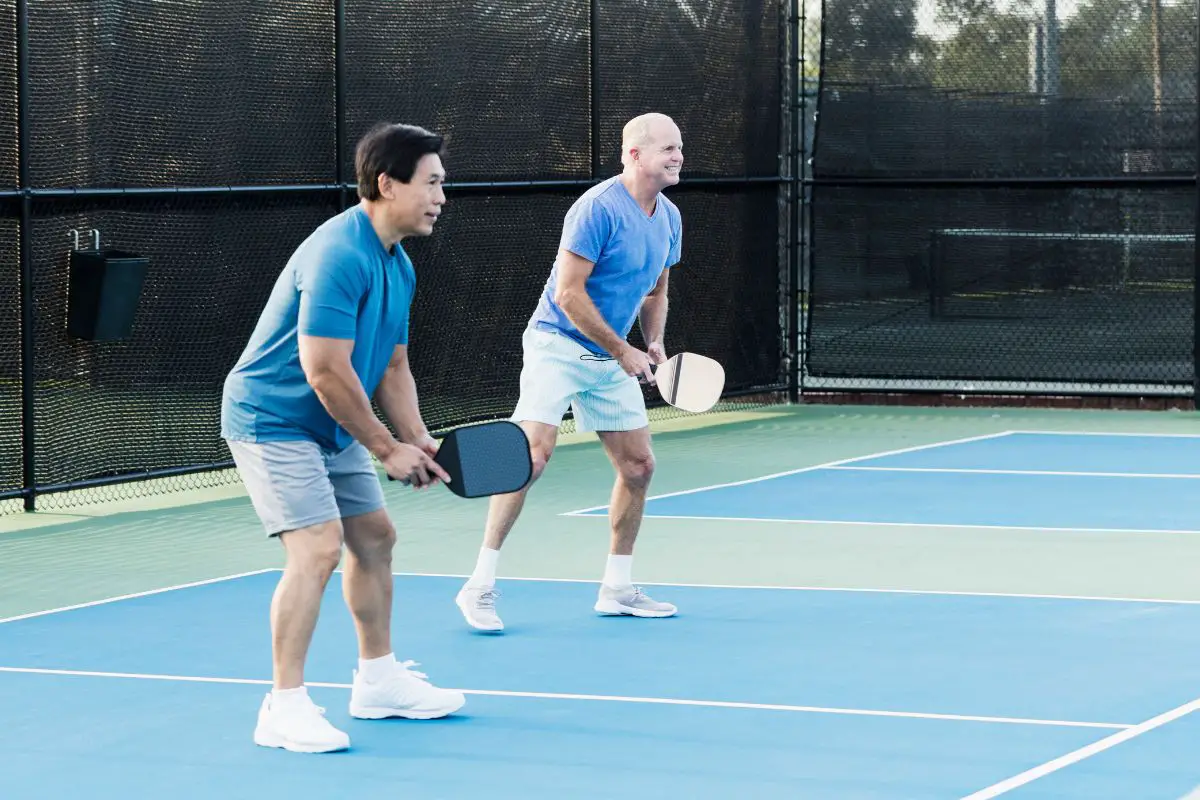Pickleball is one of the fastest-growing sports in the United States. It’s an easy sport for beginners to pick up and is accessible for so many people.
It’s a sport that many people can enjoy and have fun with on a casual level as well as a more competitive level.

If you’re hoping to become competitive and enjoy structured pickleball matches, then you will need to know the rules of pickleball.
Although pickleball shares many similarities with other racquet sports such as tennis, it doesn’t always share the same rules.
One of the most important aspects of pickleball rules is the faults.
These can result in either a loss of points or losing control of the serve, so you need to avoid them as much as you can.
In this article, we will explain what constitutes a fault in pickleball.
Let’s get started!
What Does A Fault Mean In Pickleball?
Like other racquet sports, faults occur when a rule is violated.
Faults result in the ongoing rally being immediately stopped and the player or team that made the fault losing the rally.
This results in the team or player that caused the fault either losing control of the service or losing a point.
Pickleball Faults
Let’s now look at the reasons for faults. Some of these may be familiar from other racquet sports but some are unique to pickleball.
The Pickleball Is Hit Into The Net
This is one of the most common reasons for a pickleball fault and a rally ending.
When you return the pickleball after a serve or as part of a rally, the pickleball must clear the net and cross over to the other side of the court.
If the pickleball doesn’t clear the net, then the fault occurs when it touches the floor.
It’s important to note that it is hitting the floor rather than the net itself which is the timing of the fault.
There are faults the receiving team can commit and if these occur before the ball hits the ground, then this fault is called first.
The Serve And Return Don’t Bounce
Both the serve and the return of the serve must bounce off the ground.
Although it may be tempting to immediately jump on a serve and hit it as soon as you can, you must remember to let it bounce.
Once the serve and return of serve have passed, players don’t need to wait for a bounce and can just volley the pickleball.
Hitting The Pickleball Out Of Bounds
The lines of the pickleball court are there for a reason and you need to ensure that any volley you hit does not fall out of bounds.
Don’t hit the ball too wide or long!
It is also considered out of bounds if you hit the pickleball and it falls on your side of the court instead of the opponent’s side.
Hitting The Pickleball Under Or Between The Net
Pickleball nets are wound tight but they aren’t staked into the ground.
This means that it is possible to hit the pickleball underneath the net but this is considered a fault.
There are also gaps at the side between the net and the poles that hold it in place. You can’t hit the pickleball through this gap, either.
Don’t Allow The Pickleball To Bounce Twice
Unless you are playing with wheelchair pickleball rules, there are no instances where the pickleball should bounce twice.
For example, if you are returning a serve, the pickleball must bounce once but if it bounces twice before you can reach it, this is a fault.
Violating Pickleball Serve Rules
There are many specific pickleball rules that relate only to a pickleball serve. A violation of any of these rules is considered a fault.
These rules include:
- Underhand serves: pickleball serves must be made underhand (not overhand) and the ball must be hit below the navel line
- One foot on the ground: at the time of contact between your paddle and the pickleball, at least one foot should be on the ground and behind the baseline. You can’t jump as you serve or have both of your feet inside the baseline
- Crosscourt serves: all pickleball serves must be made diagonally across the court. They can’t land in the non-volley zone (the kitchen) either
- Serving before the call has finished – after every rally, the referee will call the score. If a player serves during this call, that is also a fault. Serving before the call begins or after it has finished is not a fault
Player Contact With Parts Of The Court
There are several aspects of the court that players should not touch.
This means that they should not touch these areas with their body, clothing, or pickleball paddle.
The parts of the court you can’t touch include:
- Pickleball net posts
- Pickleball net system
- Opposing team’s side of the court
This only applies when the ball is live. If the pickleball is not in play then no fault occurs if a player touches these.

Touching A Live Pickleball With Anything But The Paddle
After a serve, the pickleball should only come into contact with a paddle.
If it hits your hand below the wrist when it is holding the paddle, then this isn’t a fault. However, any other contact is considered a fault.
If you drop the pickleball during your service and it hits your foot, this isn’t a fault either. As the ball hasn’t been served yet, it’s not considered a fault.
Double Hit
Intentionally hitting the pickleball more than once with the paddle after it has been served is a fault.
Final Thoughts
In this article, we listed some of the most common faults in pickleball. The key to becoming a great pickleball player is avoiding these faults!

I am Michael Wanner, an experienced and educated expert in the field of pickleball. I hold a degree in Sports Science from Cleveland State University, Ohio, USA. My expertise lies in the technical aspects of pickleball and how to play it effectively. I have spent many years playing and coaching pickleball and have a wealth of knowledge to share with my readers. I am a valuable resource for anyone looking to improve their pickleball skills and strategies.